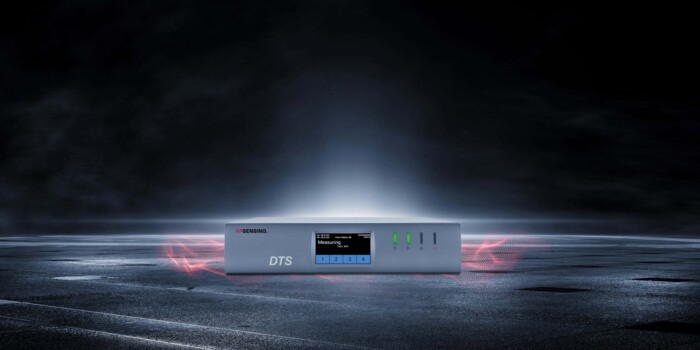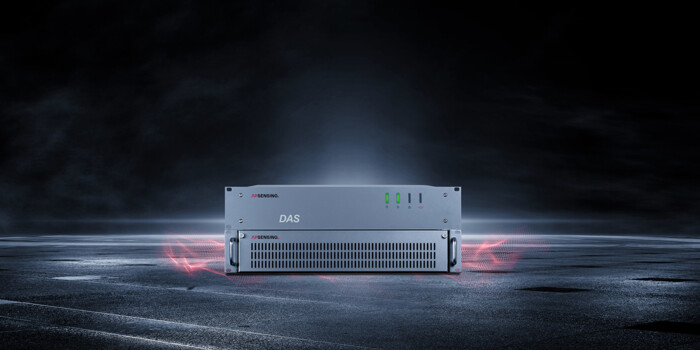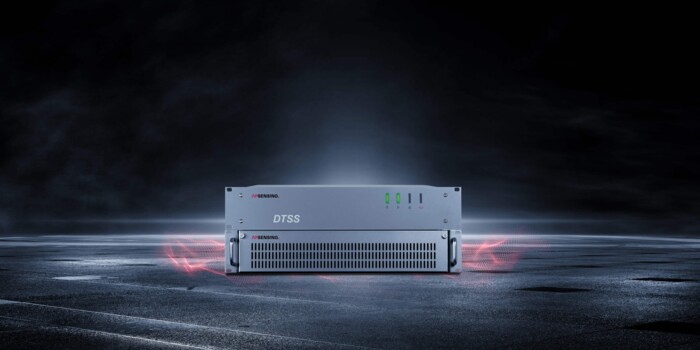There are far more than one million kilometers of active submarine cables worldwide, ranging from short spurs just a few kilometers long to extensive, long-distance cables. Monitoring these subsea cables is essential for maintaining the reliability and efficiency of underwater power transmission systems. Advanced technologies like Distributed Temperature Sensing (DTS), Distributed Acoustic Sensing (DAS) and Distributed Temperature & Strain Sensing (DTSS), play a crucial role in enhancing fault detection and location, thermal performance, capacity optimization and the integrity of subsea cables.
Overcoming Challenges in Subsea Cable Monitoring
Subsea cables, particularly HVDC systems integrated with renewable energy sources like wind, hydro, and solar, offer advantages due to their lower energy losses. However, these power cables operate in a dynamic seabed environment and therefore face several challenges. A major issue are impacts, such as ground fishing, vessel movement, and anchor drops, which can cause significant damage to the cable. Additionally, thermal hotspots, cold spots and bottlenecks require real-time monitoring and decision-making to maintain the integrity and performance of subsea cable systems. Traditional monitoring methods are reactive, often failing to detect issues early, resulting in costly repairs and downtime. A more proactive solution is essential to meet these demands effectively.
Continuous Monitoring for Subsea Power Cables
AP Sensing’s advanced technology provides continuous, real-time temperature and acoustic measurements along the entire subsea power circuit. It precisely detects hotspots and cable faults, calculates real-time ampacity, predicts emergency ratings hours in advance, and estimates the burial depth of subsea cables. Fiber optic sensing technology is at the heart of this approach, providing real-time data on the health of subsea cables and allowing operators to monitor subsea cables for immediate interventions when issues are detected.
Our technology is used for offshore power cables, such as
- Array cables
- Interconnection cables
- Export cables
Event Detection
Event detection of submarine power cables using Distributed Fiber Optic Sensing (DFOS) technology ensures precise detection and classification of critical events, enhancing the safety and reliability of subsea power cable infrastructure. Key features include:



Technologies Used in Subsea Cable Monitoring
Distributed Temperature Sensing (DTS)
Temperature data is crucial in subsea cable monitoring. Overheating in subsea cables can lead to incipient faults, which often result in temperature events that could compromise cable integrity and long-term reliability. Effective temperature monitoring is essential to identify potential overheating issues and ensure the safe operation of subsea power cables.
Distributed Temperature Sensing (DTS) is a pivotal technology for monitoring the thermal performance of subsea cables, offering continuous temperature monitoring along the entire cable length. This allows subsea cables to operate at maximum load without exceeding safe temperature limits, thereby enhancing both performance and lifespan.
Distributed Acoustic Sensing (DAS)
Distributed Acoustic Sensing (DAS) technology plays a crucial role in monitoring subsea cables by detecting acoustic vibrations that alert to potential risks. DAS technology responds to subtle changes in strain within the optical fiber, measuring vibrations that indicate potential threats or faults.
Enhancing Security with DAS
DAS technology excels in detecting impact events on or near the subsea cable, enabling operators to identify potential threats and take preventive actions. These systems offer detailed information on the frequency and amplitude of disturbances, helping operators protect offshore cable assets from potential threats like fishing and anchoring activities, extreme weather, and geopolitical tensions. It also identifies sounds from partial discharge, which can be critical in detecting unplanned activities that may pose risks to the cable’s integrity. DAS offers accurate cable fault detection and location, as well as third party intrusion (TPI) protection offshore, e.g. anchor drops and drags.
The real-time insights provided by DAS technology are invaluable for maintaining the health of subsea cables. Operators can use this data to make informed decisions, ensuring that any detected anomalies are addressed promptly. This proactive approach not only enhances the security of subsea power cables but also contributes to their longevity and reliability.
Distributed Temperature & Strain Sensing (DTSS)
Distributed Temperature & Strain Sensing (DTSS) plays a critical role in subsea cable monitoring by providing real-time insights into both thermal and mechanical conditions. In addition to detecting overheating, DTSS identifies strain, mechanical stress, and potential cable fatigue caused by ocean currents, pressure variations, and seabed movements.
By continuously monitoring temperature and strain along the entire cable length, DTSS enables early fault detection, prevents failures, and ensures safe operation under challenging subsea conditions. This enhances cable performance, extends operational lifespan, and supports the reliability of subsea power transmission networks.

Expanding Our Monitoring Solutions
Fiber-based Current Monitoring (FbCM)
AP Sensing’s Fiber-based Current Monitoring (FbCM) expands the functionality of our DAS technology with the option of electrical condition monitoring. Sheath currents of AC power cables are indicators for the functionality of bonding, insulation failures, link box flooding, unwanted ground contacts and sheath damages resulting from third party intrusions (TPI). AP Sensing’s FbCM can detect all those issues in real-time.
SmartVision Software
AP Sensing’s comprehensive power cable monitoring solution is fully integrable with existing operating control systems, and our SmartVision software makes it easy to view and analyze all data and monitor your circuits. The SmartVision management suite shows the condition of your circuits at a glance, controlled by an easy-to-use graphical user interface (GUI). Circuit layouts are mapped and color-coded to show the measured cable temperatures, as well as instantaneous changes in acoustic energy. Temperature graphs and hotspot tables are readily available. Sections of the cable route can be individually defined for flexible alarm levels and types. Points of interest, such as cable joints, J-Tubes, and terminations can be analyzed with historic trend analysis and historical data is always accessible. Read more
Machine Learning Transient Alarm (MLTA)
Additionally, our Machine Learning Transient Alarm (MLTA) detects abnormal asset behaviors that would otherwise remain hidden within the temperature traces captured DTS systems. Our unique MLTA technique allows for the isolation of thermal transients along the monitored asset, enabling the detection of even small cold- and hotspots and triggering fast, reliable alarms.
Real-Time Thermal Rating (RTTR)
RTTR, also known as dynamic cable rating, assesses the thermal capacity of electrical cables in real-time by using advanced thermal models that account for soil, ambient conditions, and loading status.
The ability to monitor temperature in real-time helps operators detect thermal bottlenecks and potential faults before they lead to significant issues.
Moreover, the implementation of dynamic cable rating (DCR) systems enhances the efficiency of power cable infrastructure by optimizing load management based on real-time thermal data. AI algorithms can proactively detect early signs of degradation in subsea cables, allowing for timely maintenance interventions that reduce downtime and costs.
Depth of Burial State Monitoring (DoBS)
For subsea cables, a Depth of Burial module (DoB) can be integrated into the SmartVision software platform to calculate the Burial Depth of the cable. DoB changes are identified along the cable, enabling significant cost savings. In addition, exposed subsea cable segments can be detected and countermeasures initiated.Building on DoBS, qDoBS offers centimeter-level accuracy in burial depth measurements. Both advanced technologies deliver precise, actionable data that optimize cable protection, maintenance, and operational efficiency, ensuring your infrastructure remains safe and compliant in the most challenging underwater environments.
Advantages of AP Sensing's Monitoring Solution
Ensuring Efficiency and Safety
Monitoring subsea cables with distributed fiber optic sensing technology provides a reliable and cost-effective method for maintaining cables beneath the seabed, without the need for expensive, on-site surveillance. Our solution offers key benefits by preventing unforeseen cable failures and the lengthy, expensive repairs that follow. It also enhances the reliability of power transmission networks, reducing the risk of unexpected outages and ensuring a stable electricity transport and supply.
With continuous monitoring, operators can optimize maintenance schedules and extend the lifespan of cable assets through timely interventions. This proactive approach ensures smooth, efficient network operation, minimizing disruptions and lowering overall maintenance costs.
With a proven track record and continued innovation, AP Sensing offers a completely integrated, end-to-end solution made in Germany. Our team works together with you to select the right combination of technologies to fit your requirements. We also provide onsite services, hotline and online support, maintenance and product training.
Find all our brochures, application flyer, product flyers, videos and further case studies in our media library.






